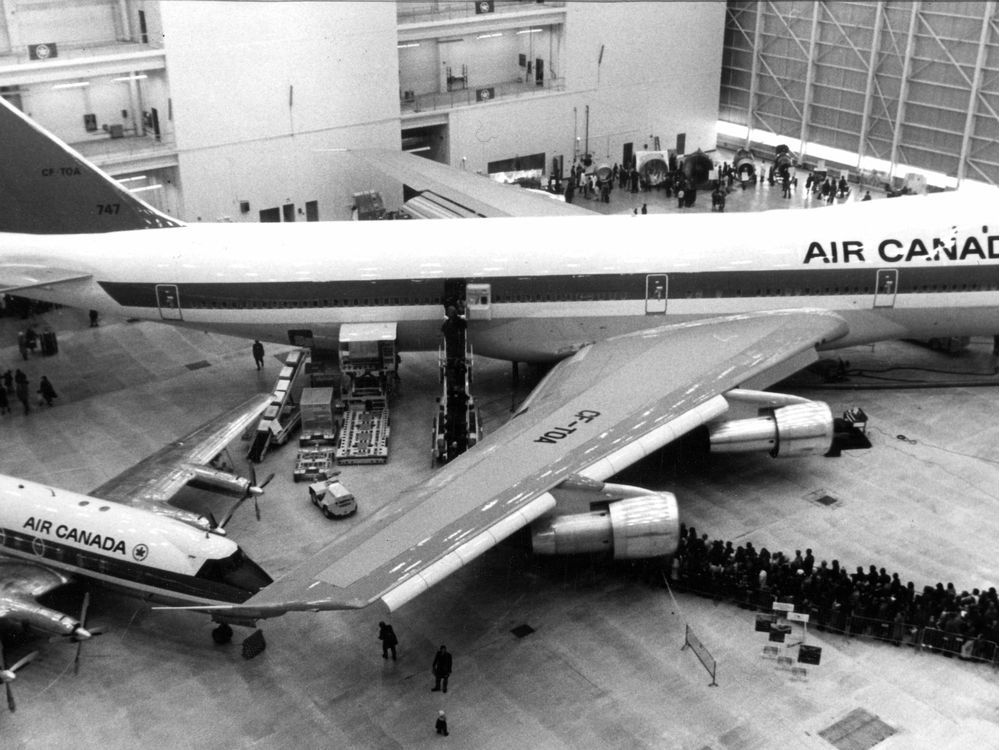So, what was it like to fly?
I started training on the 747-400 in 1997. Let's start with a look at the airplane itself.
Configuration: Back then, we configured the jet with 320 economy, 80 business, and 18 first class (in the nose, upper deck was business class). In later years, as we added economy plus, business class shrank, and the final configuration was 12 first, 52 business, 310 economy plus/economy.
The upper deck stayed business class until the jet was retired from my airline in 2015.
The jet had four P&W 4056 engines. It was glass cockpit, designed to be flown by 2 pilots.
The cockpit had two jumpseats, a business class rest seat, and an adjoining crew rest facility which had two bunks, each big enough to allow me (6'1") to stretch out comfortably, and each equipped with a temperature control, reading light, and wake-up alarm.
Forward of the vertical tail, in the space above the aft galley and luggage bins, was a flight attendant crew rest area with 8 bunks. It was accessed by a stairwell in the aft galley.
Specifications:
Operating empty weight (varied with cabin configuration, but included oil, hydraulic fluid and all service items) 408,000 - 410,000.
Max zero fuel weight: 535,000
Max landing weight: 630,000
Max takeoff weight: 875,000
Fuel capacity: 388,715 lbs
Max altitude: 45,100
Max Mach Mmo: 0.92
Max Airspeed Vmo: 365 KIAS
Max flap extension: 280 KIAS
Wingspan: 213 feet
Length: 232 feet
Height at the tail: 63 feet
10 main deck doors, each with escape slide/raft
2 upper deck doors, each with escape slide (a very long slide, not a raft, and not recommended)
General:
I started training on the 747-400 in 1997. Let's start with a look at the airplane itself.
Configuration: Back then, we configured the jet with 320 economy, 80 business, and 18 first class (in the nose, upper deck was business class). In later years, as we added economy plus, business class shrank, and the final configuration was 12 first, 52 business, 310 economy plus/economy.
The upper deck stayed business class until the jet was retired from my airline in 2015.
The jet had four P&W 4056 engines. It was glass cockpit, designed to be flown by 2 pilots.
The cockpit had two jumpseats, a business class rest seat, and an adjoining crew rest facility which had two bunks, each big enough to allow me (6'1") to stretch out comfortably, and each equipped with a temperature control, reading light, and wake-up alarm.
Forward of the vertical tail, in the space above the aft galley and luggage bins, was a flight attendant crew rest area with 8 bunks. It was accessed by a stairwell in the aft galley.
Specifications:
Operating empty weight (varied with cabin configuration, but included oil, hydraulic fluid and all service items) 408,000 - 410,000.
Max zero fuel weight: 535,000
Max landing weight: 630,000
Max takeoff weight: 875,000
Fuel capacity: 388,715 lbs
Max altitude: 45,100
Max Mach Mmo: 0.92
Max Airspeed Vmo: 365 KIAS
Max flap extension: 280 KIAS
Wingspan: 213 feet
Length: 232 feet
Height at the tail: 63 feet
10 main deck doors, each with escape slide/raft
2 upper deck doors, each with escape slide (a very long slide, not a raft, and not recommended)
General:
- Four 90KVA engine driven generators
- Four AC busses. Four DC busses. Essential, ground handling and utility busses.
- Four hydraulic systems, each with an engine driven pump and an air demand pump (there was also an electric pump on system 4, to allow brake accumulator pressurization on the ground).
- One APU with 290KVA generators (which couldn't be started in flight, oddly, but with four engines, you shouldn't ever need to).
- Fuel is contained in four main wing tanks, a center wing tank, and two wing reserve tanks. An additional tank is installed in the horizontal stabilizer and has a capacity of 22,440 pounds. Any engine can be supplied from any main tank or the center wing tank. The engines can suction‑feed from the main tanks only. A fuel jettison system allows automatic fuel jettisoning to a selectable FUEL TO REMAIN level.
- Triple ring laser gyros, dual GPS, CPDLC/FANS capability, triple autopilots, 3 VHF, 2 HF, 2 SATCOM radios. Honeywell - 4B radar with predictive windshear was installed in 1998.
- Conventional flight controls with four elevators, inboard and outboard ailerons, spoilers, slotted leading edge slats, slotted trailing edge flaps. Outboard ailerons are locked out with flaps up above 235 knots. The aileron lockout system prevents overcontrolling at high airspeeds and provides the required roll authority at low airspeeds.
- Four main landing gear trucks with four wheels each. Two in the wing root, and just aft of those, two in the body.
- Nose gear steering via rudder input (up to 7 degrees) and at low speed, tiller (up to 70 degrees) with a tiller for each pilot. At low speed (



